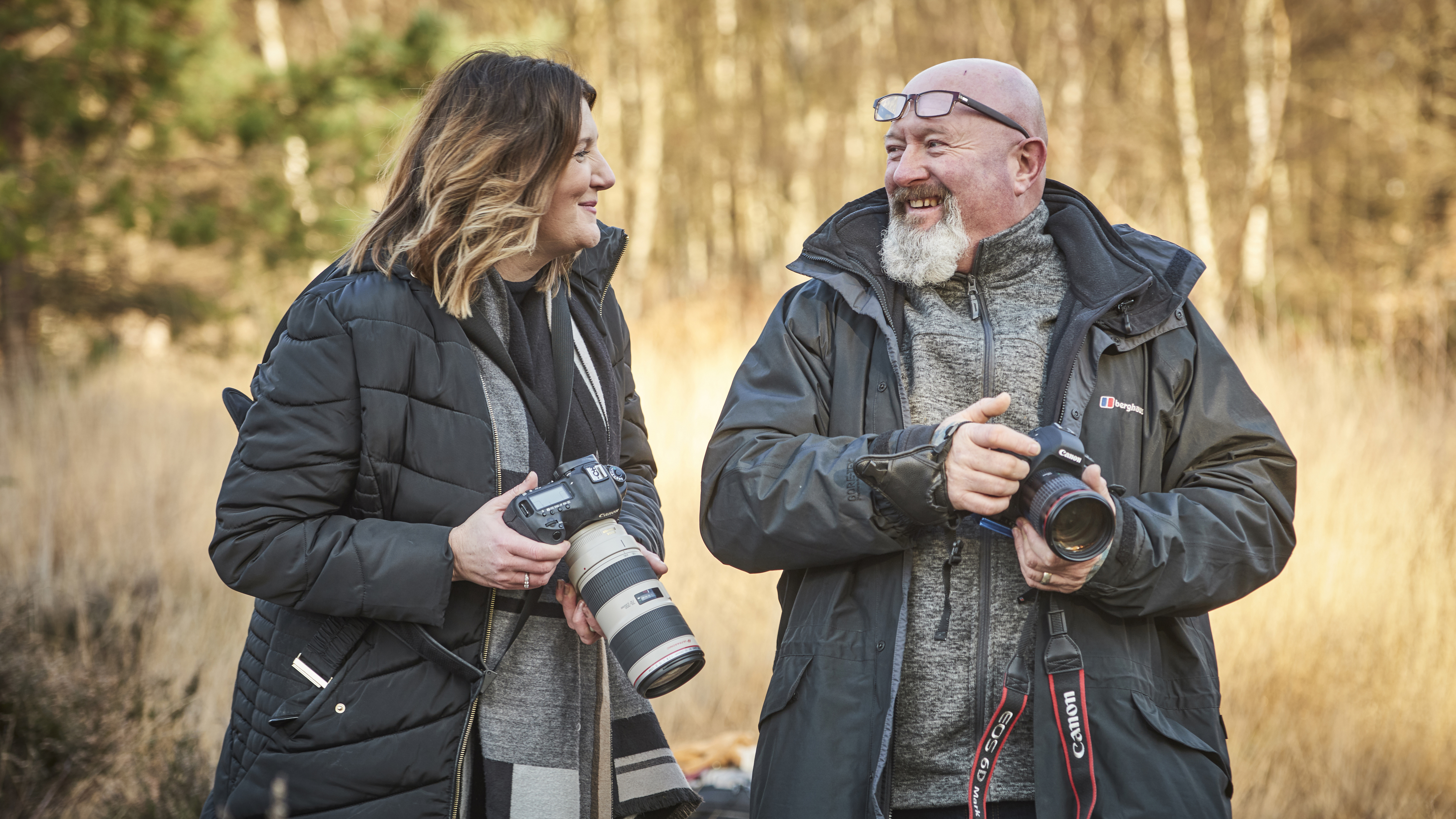What is aperture in photography? The "f-number" is actually key to taking better photos
What is aperture in photography? Here's what you need to know – and how it affects your images
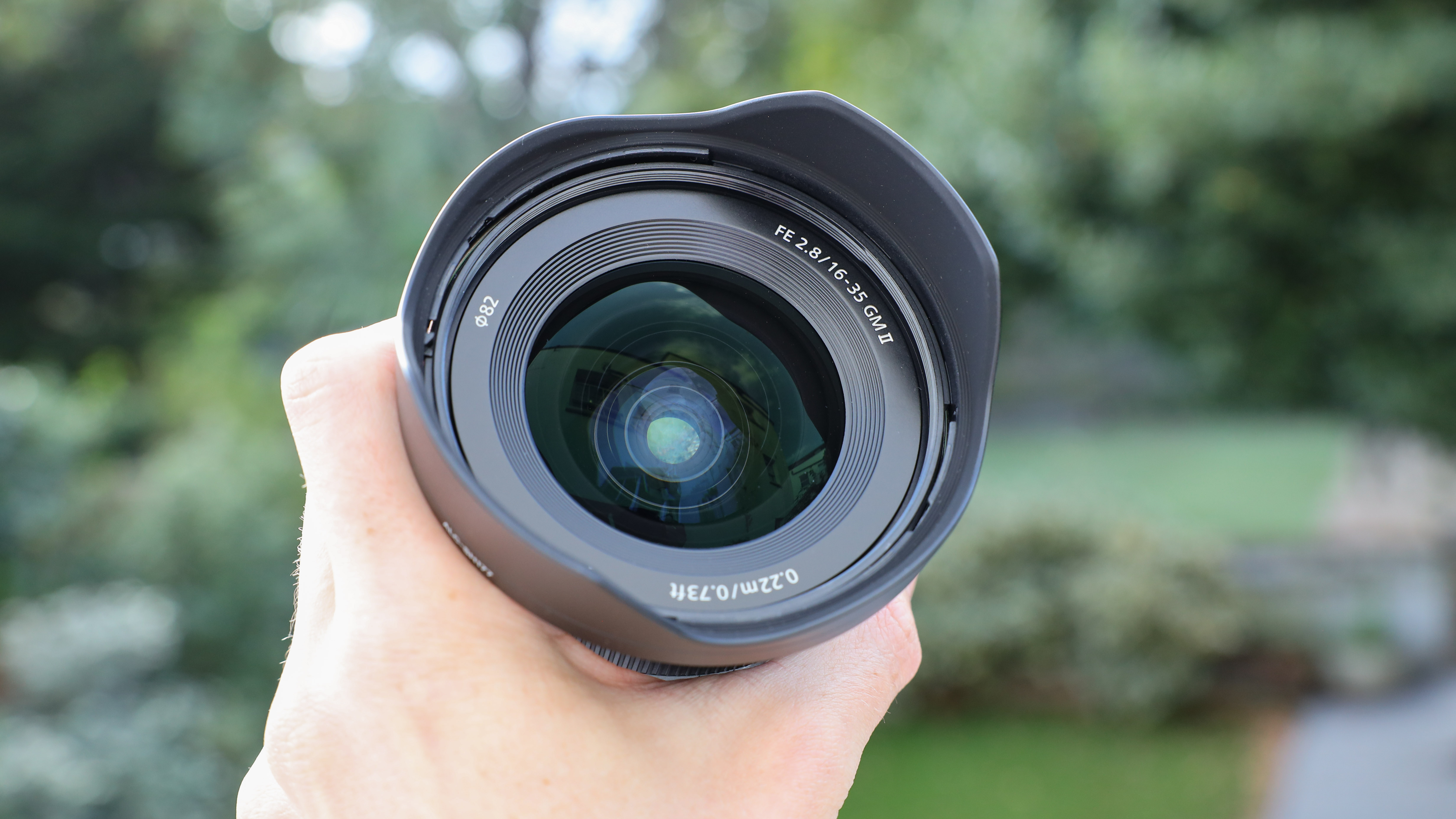
Learning photography often feels like a never-ending list, but one of the first and easiest concepts that I picked up when I first started is called aperture. But what is aperture in photography? Aperture is a setting that controls how much or how little light comes into the lens. By controlling the aperture, photographers can make a photo brighter or darker, like opening or closing a curtain to let more sunshine into a dark room.
But while aperture is one of three camera settings that influence exposure, or how light or dark a photograph is, light isn't the only thing that aperture controls. When I first learned what aperture was, I assumed that I could just keep the aperture wide open all the time to let in the most light. However, I quickly learned that that assumption led to photos that were never quite sharp enough.
A lens' aperture will also control how much of the photograph is in focus. When new photographers ask, why isn't my photo sharp? one of the common culprits is aperture. While adjusting the aperture will also influence how light or dark an image is, the setting also plays a key role in how much of the photograph is in focus.
Learning aperture is one of the first steps to getting a camera out of auto mode. The concept can be tricky for beginners. But, by understanding the two things that aperture affects and how to adjust the aperture, beginners can quickly pick up this new skill.
What is aperture? Aperture effects a photo's exposure or "brightness"
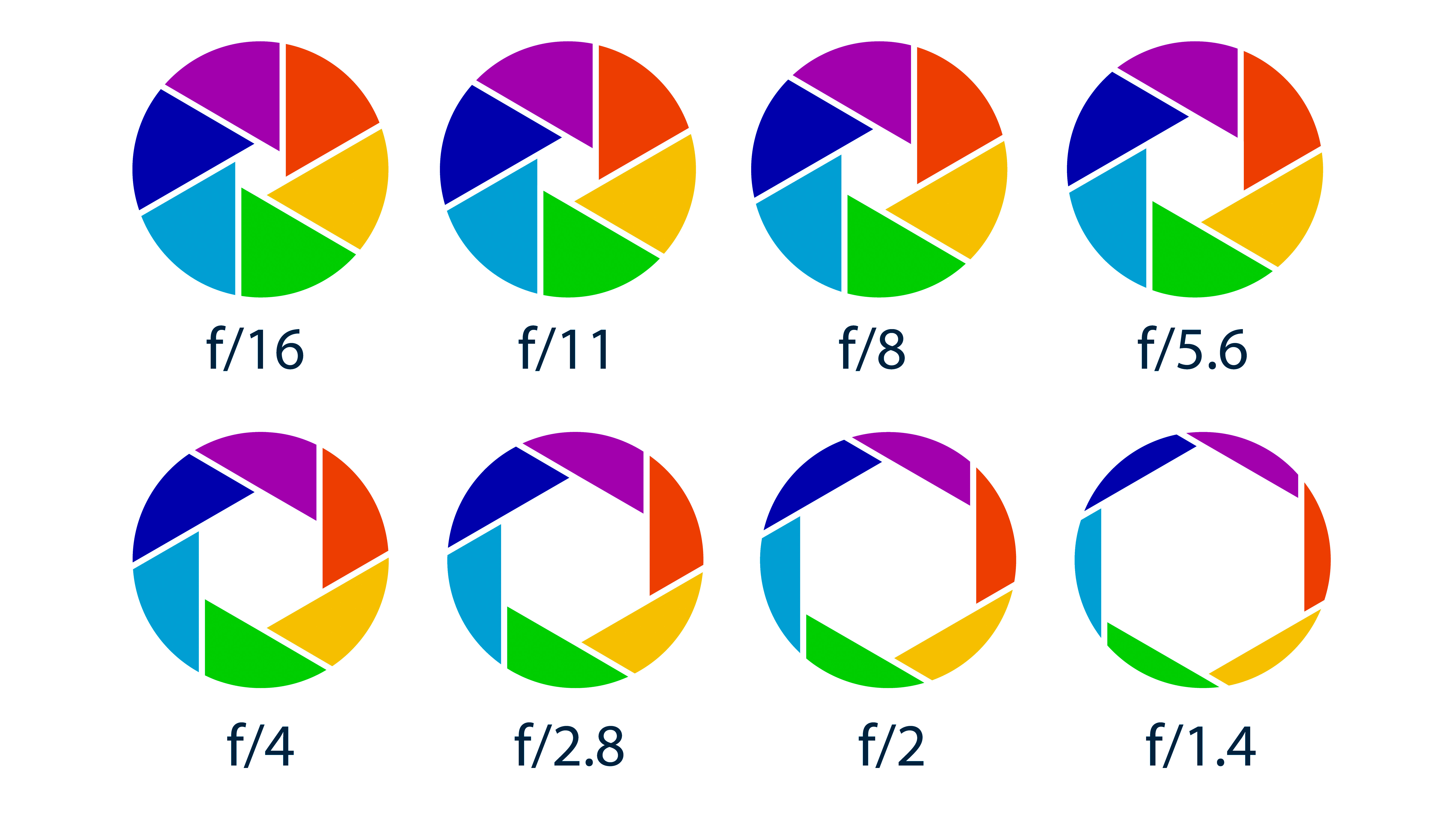
Aperture is actually more of a lens setting than a camera setting. The term aperture refers to how wide or narrow the opening in the lens is. A wide aperture will let in lots of light, creating a brighter image. A narrow aperture won't let in much light, resulting in a darker image. Think of aperture like opening and closing a curtain to let more or less light into a room, only the "room" is a photograph.
A lens' aperture blades create a hole that light passes through to reach the camera. These aperture blades can widen to let in more light, or narrow to let in less light. By changing your aperture, you can control how much light enters the camera sensor from your lens. This control allows photographers to brighten or darken an image.
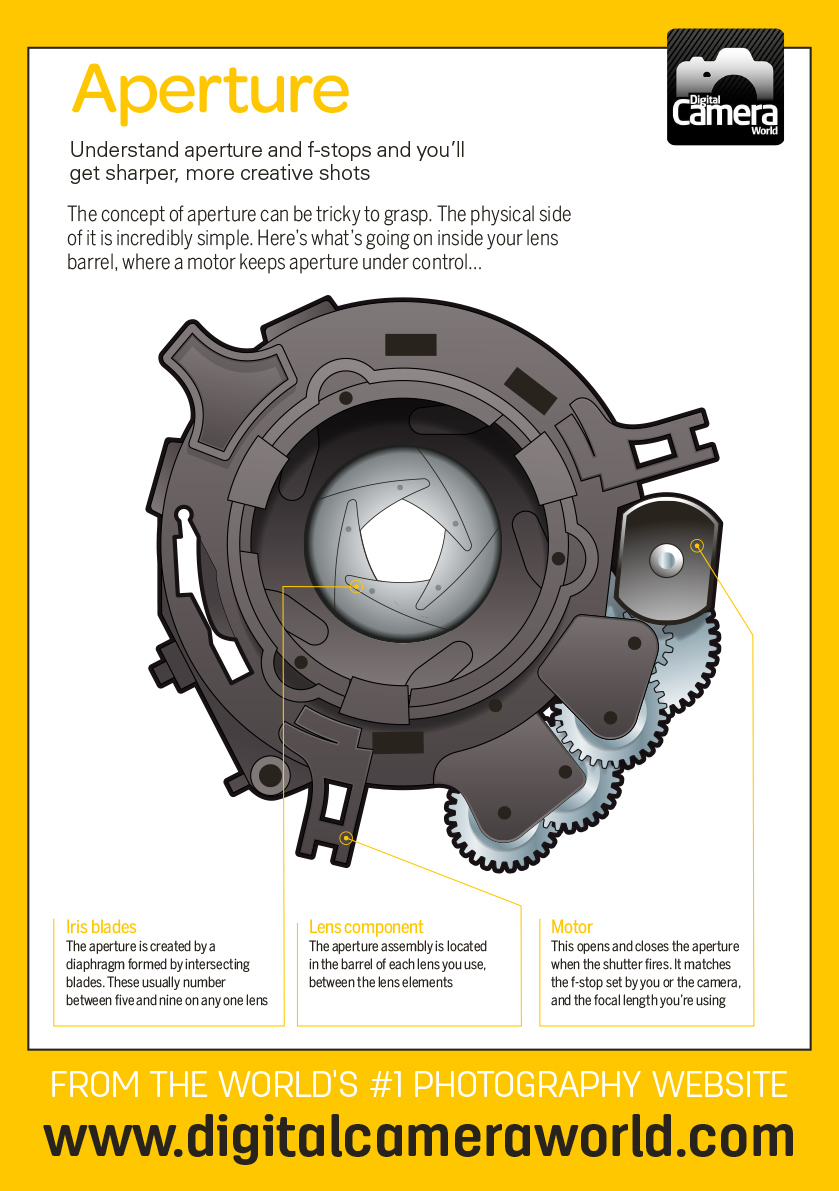
The size of the aperture opening is calibrated in "stops" of light – also known as f-stops (more on f-stops here). This numerical value also describes the ratio of a lens' focal length (the "f") to the diameter of the opening. A lower f-number, such as f/1.8, is a wider opening that lets in more light. A higher f-number, such as f/8, is a narrower opening that lets in less light.
Each successive stop is half as bright as its predecessor. That means that an f/2 is half as bright as f/1.4, f/2.8 is half as bright as f/2, and so on. But, if that sounds confusing, the most important thing to remember about aperture is that a low f-number creates a brighter image, while a high f-number creates a darker image.
Aperture also controls how much of the photograph is in focus
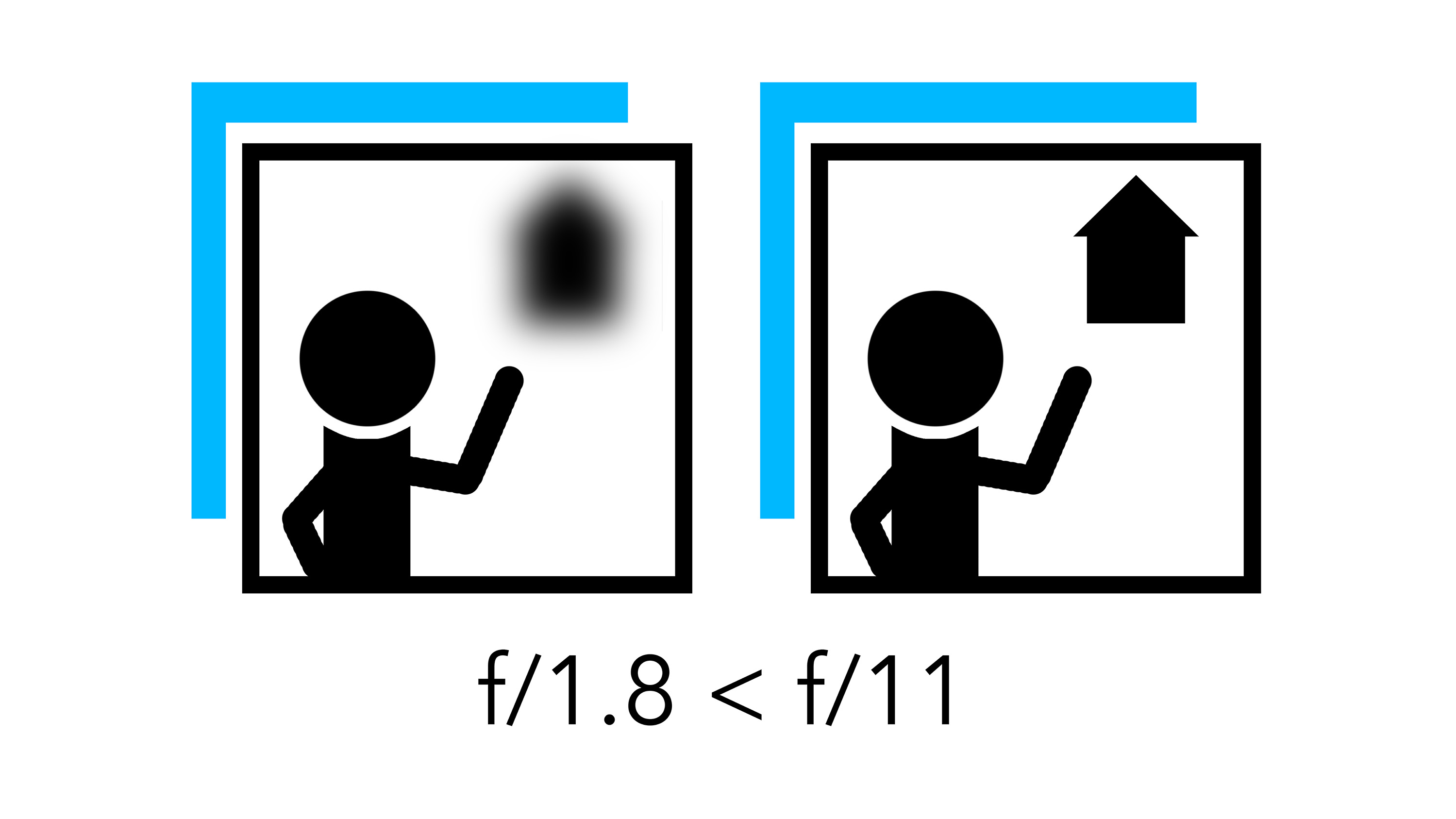
Okay, so if a wide aperture lets in the most light, photographers only need to touch the aperture setting when a photo is too dark or too bright, right? Not exactly, because the aperture also controls depth of field, or how much of the image is in focus.
Think of a professional portrait. Often, these portraits have a very blurry background. This blurry background is controlled by the aperture.
A wider aperture (which is a lower f-number) creates more background blur. An f/1.8 aperture setting, then, will both let in more light and create more background blur! This extreme background blur is called a shallow depth of field.
That background blur is often considered a good thing, after all, even the iPhone tries to imitate it with portrait mode. But more background blur means less sharpness. For example, if you take a portrait photo at f/1.2, one eye may be in focus while the other one is soft.
Using a narrower aperture (which is a higher f-number) will leave more of the image sharply focused. If you take a photo and it's not very sharp, an aperture that's too wide could be the culprit (the other common culprit is the wrong autofocus setting). Using an aperture of f/8 or f/11 will leave more objects in the photo in focus, which is called a deep depth of field.
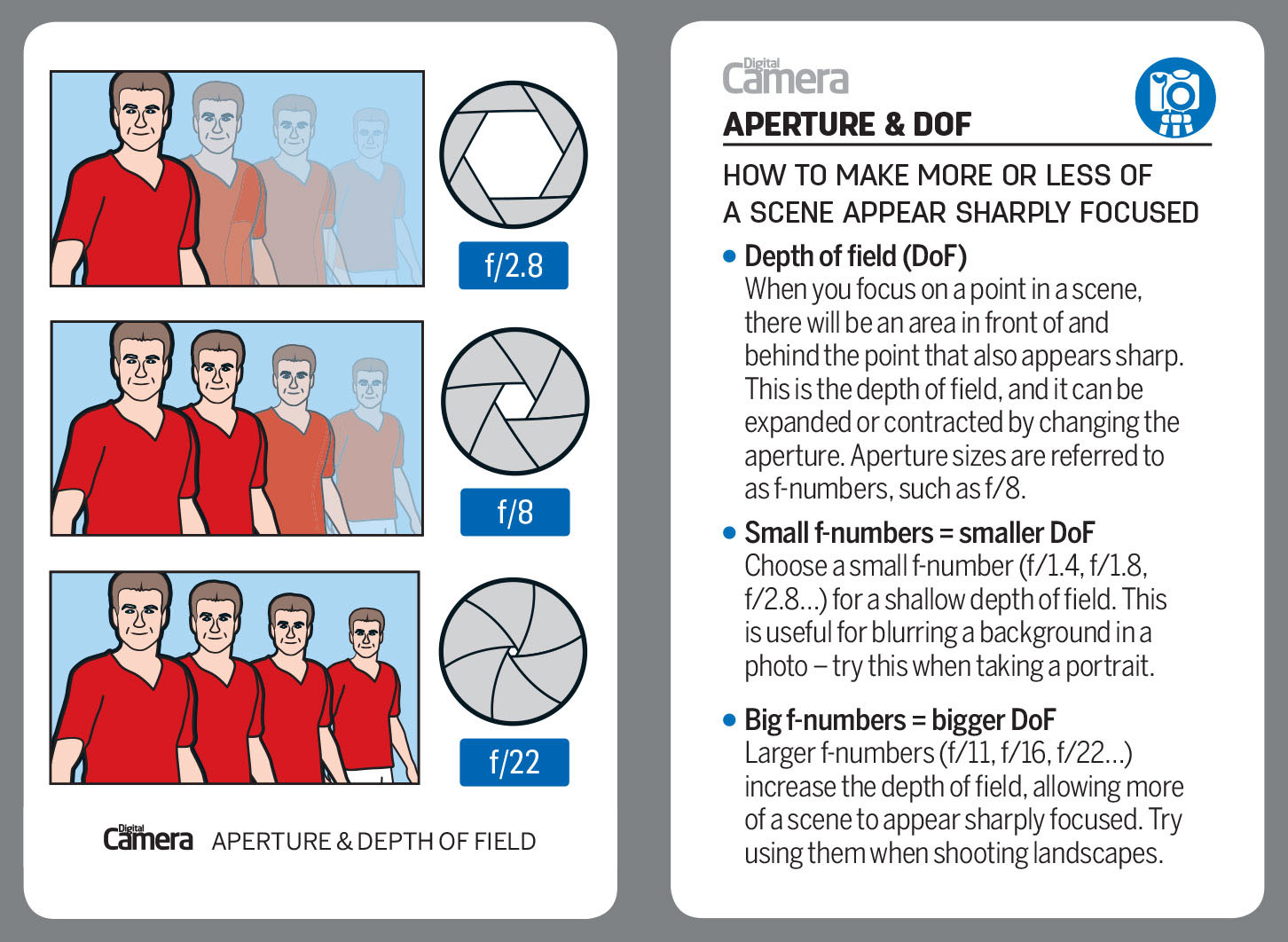
Let's put that concept into practice. If you are taking a group photo of your family, an f/1.8 aperture is going to make the people in the second row blurry. If you narrow the aperture to f/8, you can get both the front and second row perfectly focused.
In short, a wider aperture lets in more light and adds more blur. A narrower aperture limits the light coming into the lens but leaves more of the image sharply focused.
Aperture is one of the three fundamental pillars of the exposure triangle, (the other two being shutter speed and ISO). Learning all three allows a photographer to have full control over the photograph to capture a correct exposure. But, it's perfectly fine to take baby steps and learn aperture before moving on to the other two exposure elements, thanks to a setting called aperture priority mode.
How do you adjust the aperture on a camera or a lens?
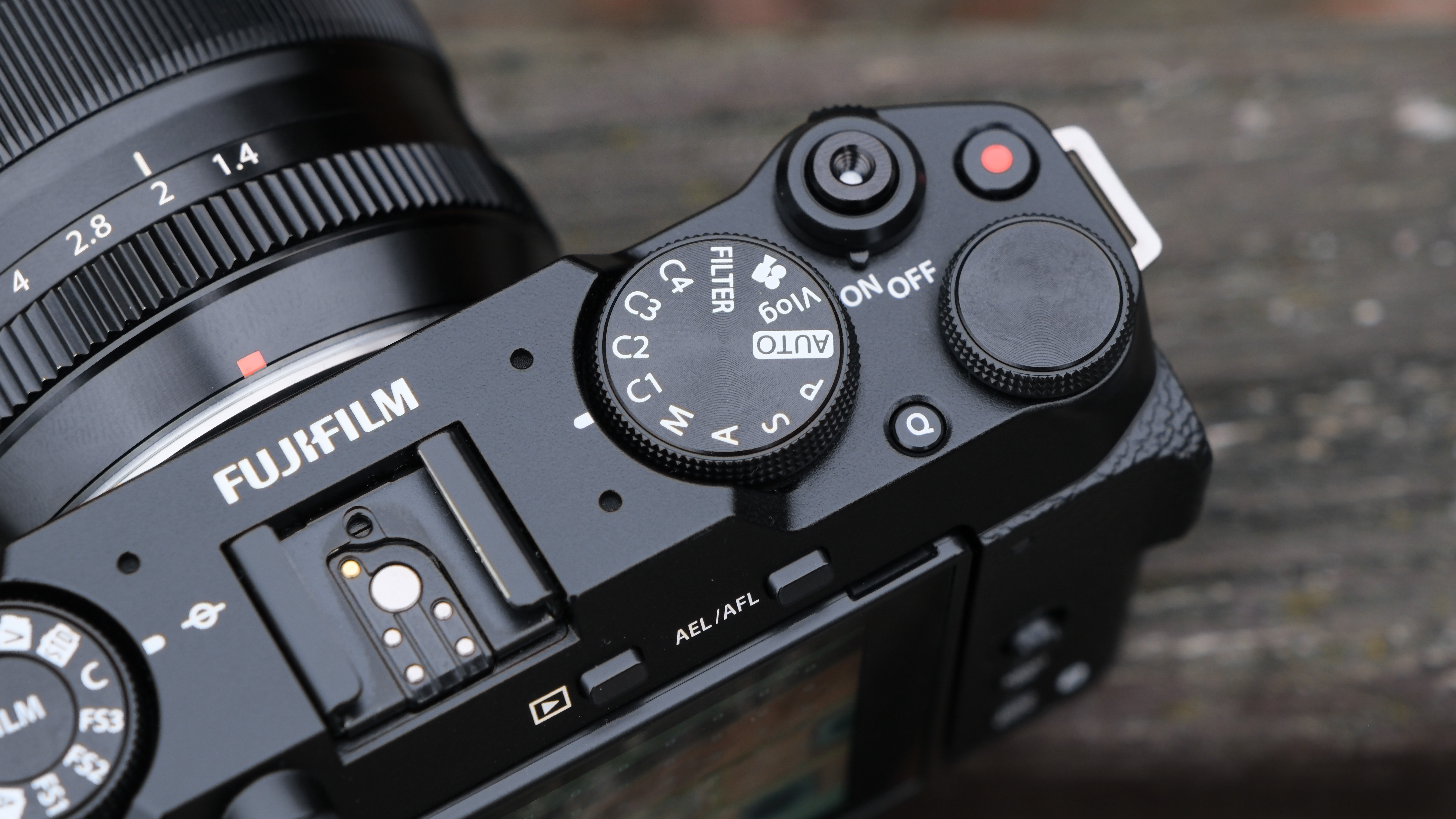
Once you understand the basics of how aperture works, it's time to put it into practice. The first step is to get your camera off of auto mode.
Instead of the green camera icon or auto mode, turn the mode dial on the camera to A (or Av, if you have a Canon camera). Most cameras will have that mode dial but some do not, so if you can't find the setting, consult your camera manual. If you are working with a budget compact camera, your camera may not even have aperture priority mode at all, but DSLRs and mirrorless cameras have this setting, along with high-end compact cameras.
What aperture priority mode does is allow the photographer to control the aperture while leaving the other settings on automatic. That means you can control aperture before you learn about shutter speed and ISO. Aperture priority mode is a great learning tool, but I even use it often as a professional photographer at times because it is quick and simple.
Once your camera is in aperture priority mode, you'll adjust the aperture itself. Most cameras do this in one of two ways. The first is on a control dial directly on the camera, often near the shutter release, or the button that takes the picture. The second common location of the aperture setting is on the lens itself. This looks like a ring around the lens, which is often (but not always) labeled with those f-numbers. Because the method to change the aperture depends on what camera and even lens you are using, if you aren't sure, consult your camera manual.
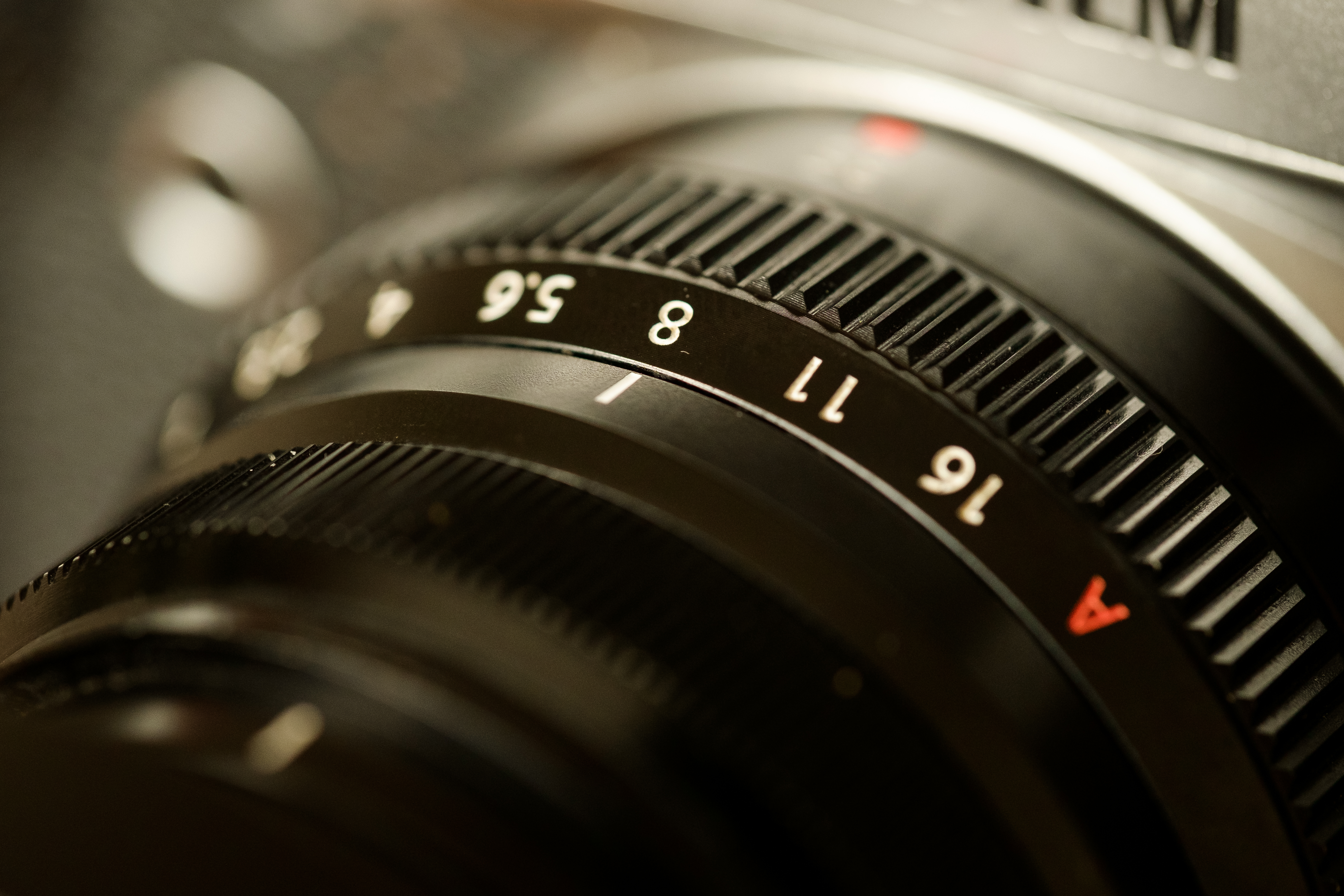
Next, use the control dial or lens ring and watch the f-numbers on your camera's screen or viewfinder change. Learn by experimenting. Try taking a photo at a low aperture, then another at a high aperture and compare the differences between the two photos.
Once you are comfortable with aperture, dive into the two other settings that are essential to exposure: shutter speed and ISO.
How does aperture come into play when buying a camera lens?
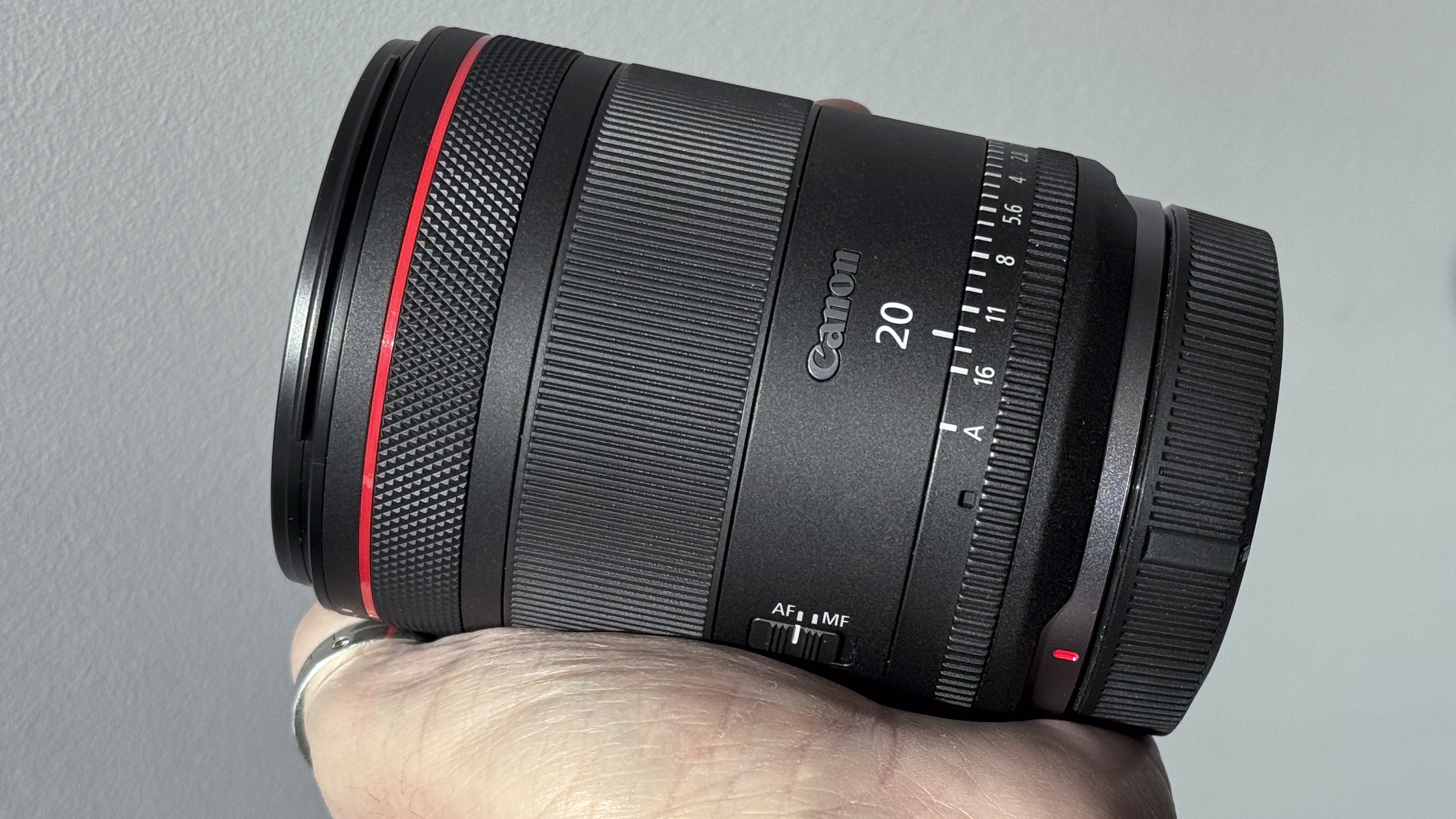
An aperture itself (the opening) is formed by intersecting blades. Different lenses have a different number of blades, and these can move to make the opening larger or smaller depending on the f-stop that you select.
The aperture assembly is located in the barrel of the lens, between the lens elements. A motor opens and closes the aperture as you adjust the aperture setting.
The different aperture settings that you have to choose from will depend on the lens that you have. Camera lenses have a maximum aperture setting, or the brightest, widest opening possible. This varies from lens to lens.
If you have a mirrorless camera or DSLR and a basic kit lens that came bundled with the camera, you may have a lens that goes as wide as f/4 or f/5.6. More advanced lenses will have brighter apertures. A prime lens, which is a lens that doesn't zoom, can have a wide f/1.8 or even an f/1.2 aperture. Lenses that have zoom will often have a narrower maximum aperture, like f/2.8 or f/4.
That means that, if you have more than one lens, one might have a wider aperture than the other. Photographers often refer to this as a "brighter" lens. Now that you know what aperture is, you should keep that in mind whenever you shop for a new camera lens. The maximum aperture is listed right in the lens name. For example, a lens with "f/1.2" in the name is going to be brighter than a lens with "f/4" in the name.
Aperture explained at a glance
- Aperture is calibrated in f-stops.
- A wide aperture opening creates a brighter image with more background blur.
- A narrower aperture opening creates a darker image, but with more objects sharply focused.
- An aperture of f/22 is narrower than f/4.
- Your maximum or widest aperture is determined by your lens.
You may also like
You don't have to memorize the exact definition of aperture at first – download these photography cheat sheets so you can learn while out shooting with your camera. Or, browse the best cameras for beginners or the best camera lenses.
Get the Digital Camera World Newsletter
The best camera deals, reviews, product advice, and unmissable photography news, direct to your inbox!

Lauren is a writer, reviewer, and photographer with ten years of experience in the camera industry. She's the former Managing Editor of Digital Camera World, and previously served as Editor of Digital Photographer magazine, Technique editor for PhotoPlus: The Canon Magazine, and Deputy Editor of our sister publication, Digital Camera Magazine. An experienced journalist and freelance photographer, Lauren also has bylines at Tech Radar, Space.com, Canon Europe, PCGamesN, T3, Stuff, and British Airways' in-flight magazine. When she's not testing gear for DCW, she's probably in the kitchen testing yet another new curry recipe or walking in the Cotswolds with her Flat-coated Retriever.
You must confirm your public display name before commenting
Please logout and then login again, you will then be prompted to enter your display name.
